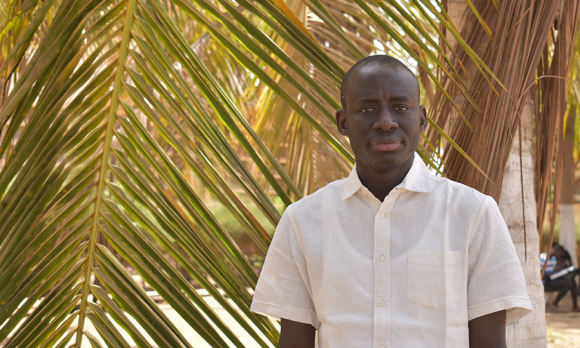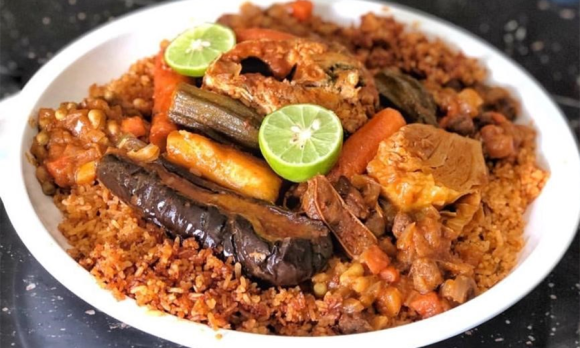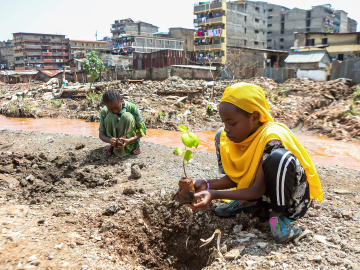Diabetes on the Rise in Senegal
DAKAR—Senegal’s bustling capital—one of West Africa’s biggest cities, with nearly 2.5 million people—is surprisingly calm and quiet in the early hours of the morning.
One exception: the Mark Sankalé Center, where by 8 a.m., dozens of people already cluster in an open-air waiting room. Many traveled for hours to get there. Dressed in vibrant traditional clothes, they wait to be seen—sometimes alone, sometimes with relatives. Some sleep on benches; many look impatient or exasperated. Some have their feet wrapped in plastic and bandages. Others have bleeding unwrapped foot wounds.
All of them have diabetes.
According to the International Diabetes Foundation, about 425 million people were living with diabetes worldwide as of 2017—79% in low- and middle-income countries. The number of people with diabetes is predicted to double in many sub-Saharan African countries, including Senegal, in the coming decades. The surge in cases presents new challenges to Africa’s health systems. The WHO reports a diabetes prevalence of 5.1% in Senegal as of 2016, or 771,579 people living with diabetes.
“There is a true epidemiological transition towards non-communicable diseases, particularly diabetes,” says Mor Diaw, a physician-researcher specializing in diabetes and obesity at Dakar’s Cheikh Anta Diop University. He attributes the transition largely to changes to diet and lifestyle that come with the urbanization of cities like Dakar.

Mor Diaw, a physician-researcher with Dakar’s Cheikh Anta Diop University. Image Courtesy of Amy Nye.
Compared to rural areas, the city is filled with new foods, more flavorful and convenient than ever. “We are moving towards a more Western lifestyle, with junk food and a more sedentary lifestyle,” says Djiby Sow, a Mark Sankalé center doctor who specializes in nutrition and diabetes.
The official dish of Senegal, anyone will tell you, is thieboudienne, translated to “fish” and “rice” in Wolof. This fish stew, served over rice cooked in a generous portion of oil, is a relatively new food in Senegal; it did not exist until around 50 years ago—but now it is found in homes, restaurants, and street stalls alike.
Originally, millet was Senegal’s predominant grain—until rice became widely imported, mostly from Asia. Now, serving rice with every meal is considered a staple in Senegalese culture. Many people say, “if you haven’t eaten rice, you haven’t eaten.” In addition to these high-calorie, high-fat meals eaten regularly, Senegal’s traditional drinks are high in sugar. Attaya and café touba, the traditional tea and coffee of Senegal, are often made with equal parts sugar and water. There is also bissap, a juice brewed from hibiscus flowers and saturated with sugar. Although fruits and vegetables are widely available in Dakar’s small markets and produce stands, they are generally used only sparingly in Senegalese cuisine.
Many of Senegal’s health and nutrition shifts can be attributed to urbanization, as more people leave behind their rural homes for obesogenic cities like Dakar. Those who relocate to urban areas often leave behind a life devoted to farming, where food was limited and people often suffered from malnutrition and micronutrient deficiencies.
Cities, in contrast, offer newcomers greater access to food—specifically high-calorie food—and more sedentary lifestyles. During this migration, the perceptions of food culture and body image also often change. In the urban areas, weight gain, particularly after marriage, is viewed as a sign of prosperity, happiness, and success—particularly among women, who experience higher rates of diabetes and obesity in Senegal. This is also partially fueled by the tendency for women to be less physically active, because they are responsible for childcare and home upkeep. These factors coalesce into the perfect storm for developing diabetes.

Many popular dishes in Dakar are high in calories and fat, fueling the rise of noncommunicable diseases. Image Courtesy of Amy Nye
The Mark Sankalé Center diagnoses 2,000 new cases of diabetes a year—a number Sow says he believes is an underestimate of the true number of new cases, given the many reasons people don’t seek or receive care. One of the biggest challenges in managing diabetes, he explains, is the cost of traveling to the center and paying for tests, consultations, and medicines. These costs, not to mention the added costs of a special diet—one of the biggest challenges to managing diabetes—are unaffordable for many.
Many of the Center’s patients talk about the fear they experience after diagnosis and the daily stress of managing the condition. Khady,* a woman in her mid-50s, explained that when she was first diagnosed, she thought diabetes was a death sentence. Now, she’s learning how to keep it under control.
Still, she says, “Diabetes is exhausting.” Her family struggles to keep up with the costs of her medication, but the recommended dietary changes pose a big problem, since her family, like most in Senegal, eats communal meals centered around a base of rice.
Binta has a similar story about the challenge of managing her illness and having to travel regularly to the Center for tests. “It hasn’t been easy,” she said. “It’s expensive, and the diet is hard to follow. But I eat less rice now, and no more sugar. I’ve had to stop drinking all the sugary drinks that I love.”
Most people in Dakar have heard of diabetes, yet it is poorly understood. Diaw, who has devoted much of his career to studying diabetes and obesity in Senegal, says “…there is no such thing as being ‘pre-diabetic’ in Senegal, either you are not diabetic, or you have been diagnosed with diabetes.”
While some programs address the treatment of diabetes, they cannot accommodate the growing prevalence of the disease and do not target important components like education and sensitization. “Diabetes is known in a superficial manner, but if you ask a diabetic to name the complications of diabetes, I’m not sure they could even give you two examples,” Diaw said.
Doctors like Sow and Diaw are leading an emphasis on prevention. Sow says it is critical to focus on the battle against obesity, using education and sensitization as the key tool—covering as many people as possible, and starting as young as possible
“People need to know to improve their diets, increase their physical activity, and visit their doctor regularly. We need to show people that physical activity will prevent diabetes and obesity.”
*Individuals chose not to use their full names in order to protect their privacy and anonymity.
Amy Nye, a Pulitzer Center Reporting Fellow who recently completed her MPH degree at The George Washington University Milken Institute in Washington, DC, wrote this article while working in Dakar, Senegal, for Helen Keller International where she focused on program design, monitoring, and evaluation within global health.
Join the tens of thousands of subscribers who rely on Global Health NOW summaries and exclusive articles for the latest public health news. Sign up for our free weekday enewsletter, and please share the link with friends and colleagues: http://www.globalhealthnow.org/subscribe.html
Outside the Mark Sankalé Center for diabetes in Dakar, Senegal. Image Courtesy of Amy Nye




